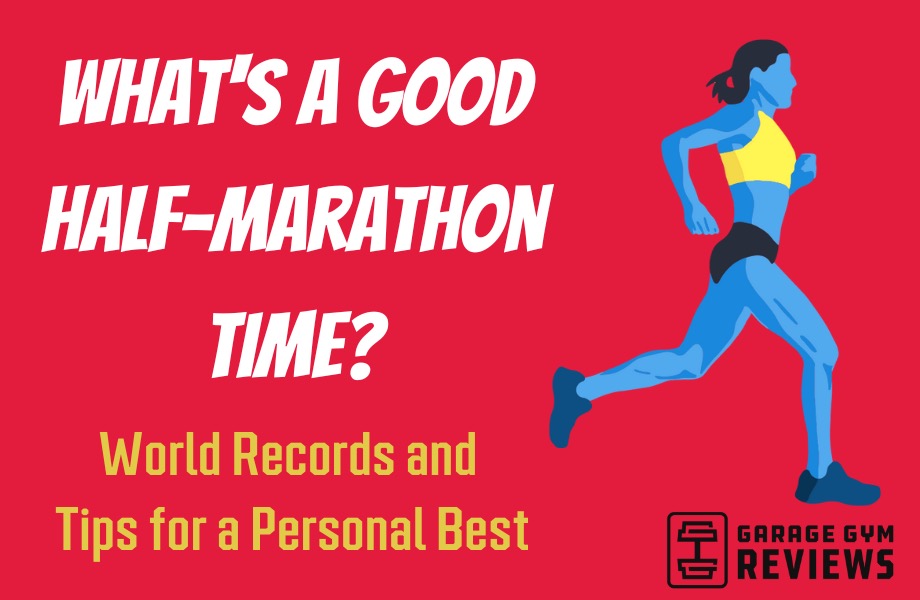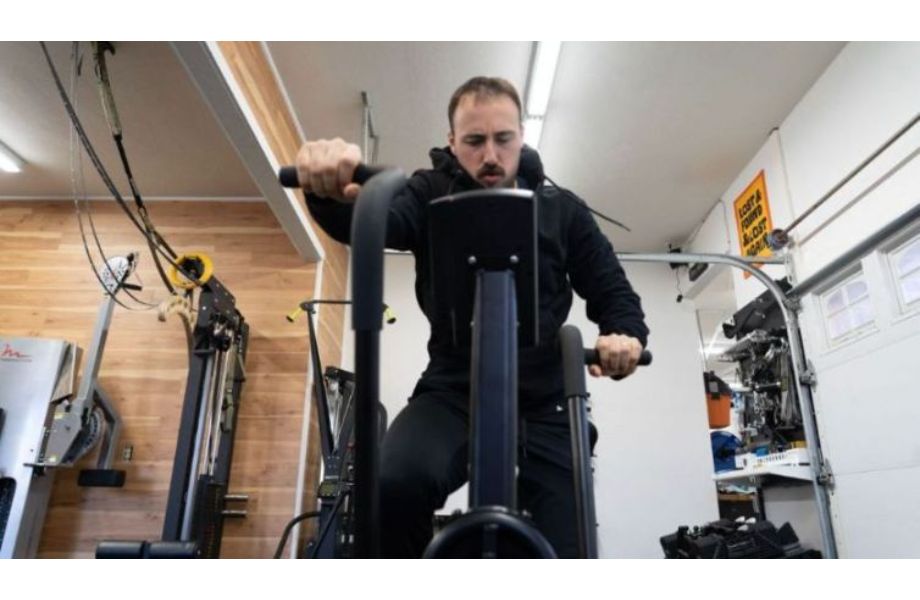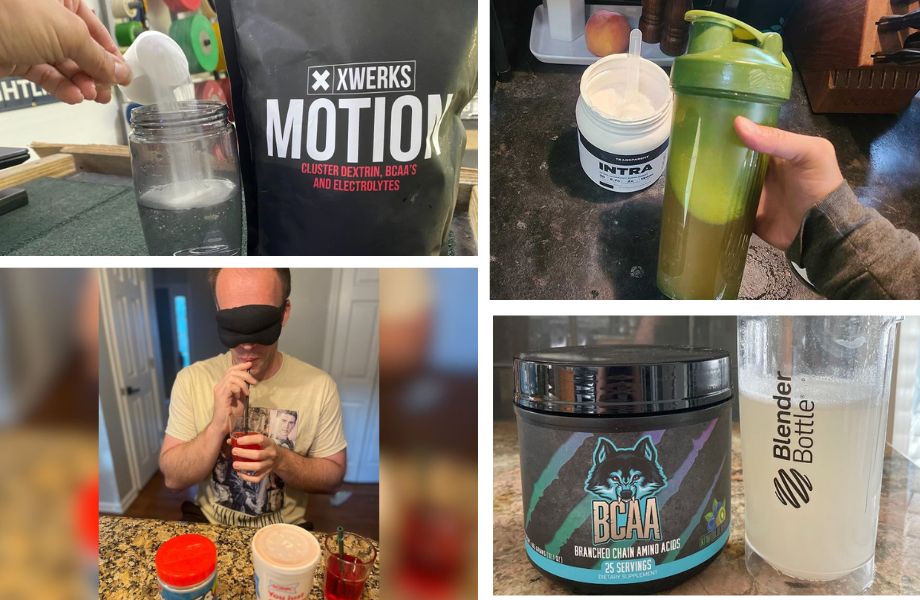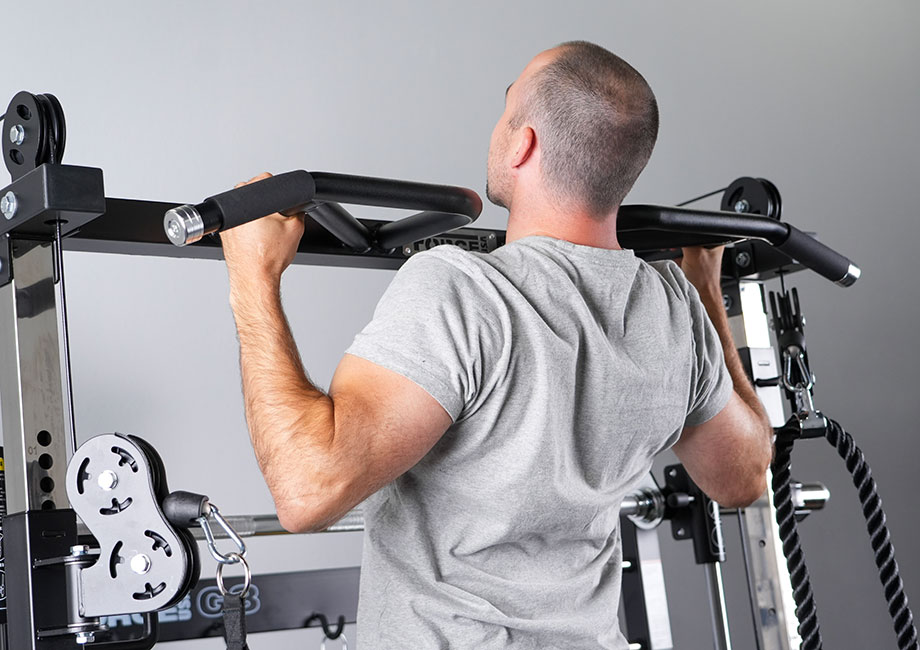A good halftime consists of orange slices and an upside down Capri-Sun.
Half-board at a B&B can deliver a delicious breakfast.
The best oyster is the kind served on the half-shell.
There are lots of awesome half-things out there. One other supremely awesome half-thing is a half-marathon. Even better? A good half-marathon time. Let’s find out how to get one.

Average Half-Marathon Time and World Records
The worldwide half-marathon average time is right around 01:50:00 . Shockingly, this is right around half of the average pace of a full marathon.
However, per-mile times drop dramatically in ultramarathons. This may be due to the relative newness of 100-mile races, or it may be the difference between energy system usages in the body.
A half-marathon distance of 13.1 miles is very similar to its double-sized cousin in terms of training and stress on the body.
The half-marathon world record for male runners is a staggering 57:311, set by Jacob Kiplimo from Uganda. Note that Eliod Kipchoge has only unofficially broken the 2-hour mark in a full marathon, indicating elite runners can push harder in this distance.
Per World Athletics, the world record for female half-marathon runners is 1:02:52, set by Letsenebet Gidey2 of distance running powerhouse Ethiopia.
Both of these records were claimed on the Iberian Peninsula, with Kiplimo setting his mark in Lisbon, Portugal and Gidey hitting her time in Valencia, Spain. Hemingway would be in heaven.
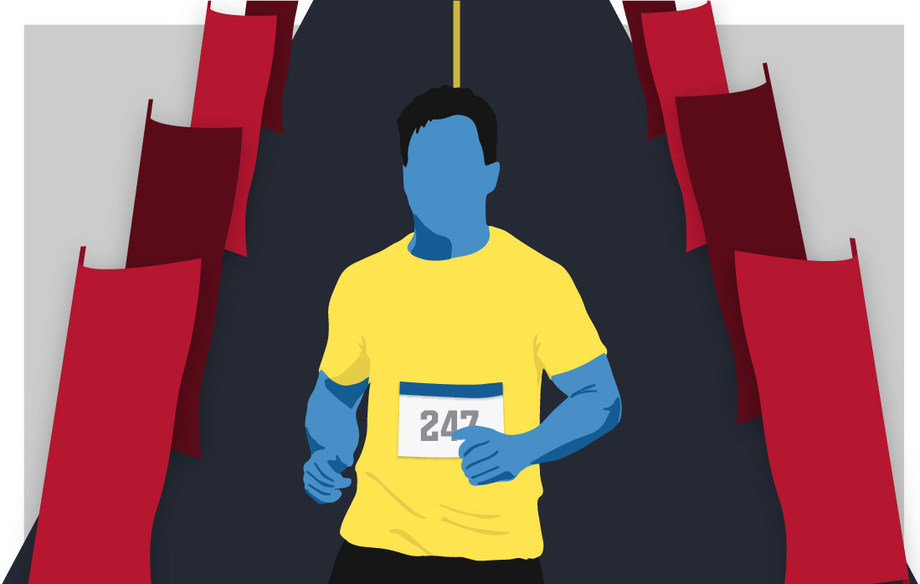
What Is a Good Half-Marathon Finish Time?
Experience and fitness level can be the greatest factors in getting a good half-marathon time. Your first half-marathon race probably won’t be as good as your fifth. You would have advanced from a beginner to an intermediate runner (possibly even an advanced runner) by that point.
RELATED: Marathon Record Time
Not only will you be a more experienced runner, you will have increased your fitness level by leaps and bounds.
Time is the greatest training partner a runner can have.
But isn’t another word for “time” something more sinister? “Age?”
While age, across the enormous bell curve of averages, can certainly play a role in your paces, it may not affect your race time as much as you might think. Running group New York Road Runners published this reference guide for qualifying for the 2023 New York Marathon3.
Note that the difference in half-marathon qualifying times for the male 18-24 age group is 1:21:00, the time for the 60-64 age group is 1:41:00. That’s only 20 minutes over a 45-year age gap!
Someone good at math can turn that into a percentage. Then they can use that data to create advanced analytics and ruin the sport. It’s the American way.
How to Get a Good Half-Marathon Time
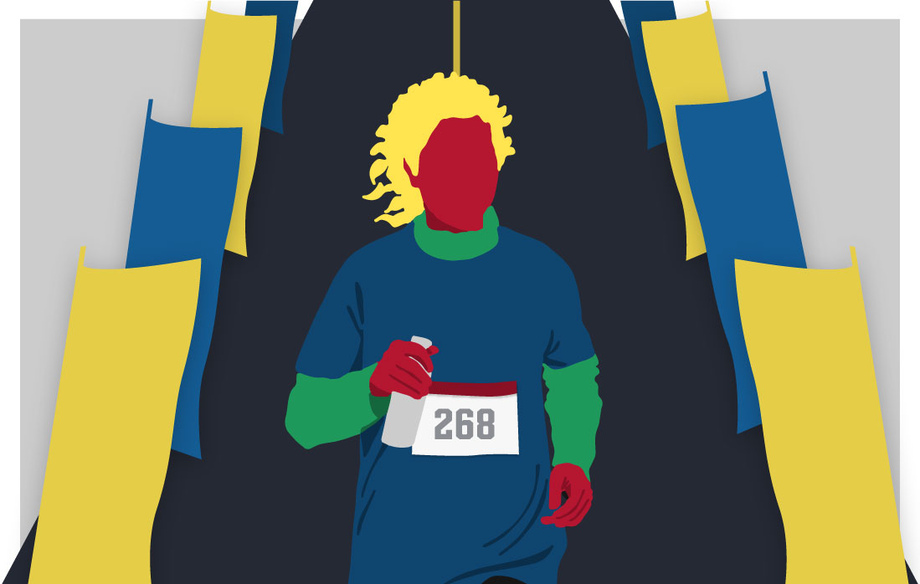
Aside from pulling a Rosie Ruiz and taking public transportation, making a commitment to a training schedule and showing up at the start line rested and mentally prepared is your best option.
- Work With a Running Coach or Training Group
Humility and an open mind are the greatest assets any athlete can possess. Having extra pairs of eyes—and emotional support—are especially important if you are training for your first half-marathon.
A coach, personal trainer specializing in half-marathons, or an experienced running group can help you establish a logical training plan that will maximize your workouts. I love it when a plan comes together!
- Incorporate Speed Intervals
Speed intervals do more than train your body to move fast. Speed work4 allows you to work closer to your lactate threshold for short periods. This kind of interval training can be mixed in with your longer, slower runs.
When you perform these higher-octane tempo runs5 you will reach physical exhaustion in a much shorter period of time. In a way this is like strength training. You are forcing your body to put out more watts, rather than putting out more distance, so that when you recover and adapt you will have greater power available to you.
We break up our days into “speed” and “endurance” in order to better train each component separately. This is like having a math class at 9 a.m. and an English class at 1 p.m. Rather than trying to create a total unified theory by learning algebra and grammar all at once, you focus on getting better at each on its own.
- Take Rest Days
Remember, our bodies need to recover to adapt. Both beginners, through their zeal of the convert, and advanced runners, through identifying strongly with running as a lifestyle, alike love to fall into the trap of “more is better.”
Sometimes the most important thing a coach can do is help enforce rest days. If you feel your running performance dropping on training runs, or if you feel extra achy and beat up in the morning, consider taking a break for the day.
- Make a Plan for Race Day
If you have no particular race running experience, race day can be a stressful prospect. Assuage your anxieties by creating a plan for yourself. Are you traveling for the race? Research hotels near, but not too near, the start line.
Come up with a diet plan for the night before and morning-of so you aren’t grasping for honey-buns. If the hotel you booked doesn’t have a hot breakfast and nobody in the town the race is in knows what a bodega is (my life after I left New York!), pack food with you.
Know yourself and your preparation needs. Set two alarm clocks and a wake-up call so you don’t become a living Seinfeld episode.

- Prepare Mentally
Visualize yourself crossing the finish line. Understand there will be points where you will struggle. Things will go wrong, but you will finish anyway. If you are a more experienced runner and have been working hard to set a personal record, stick to your strategy and run your own race.
Half-Marathon Pacing Chart
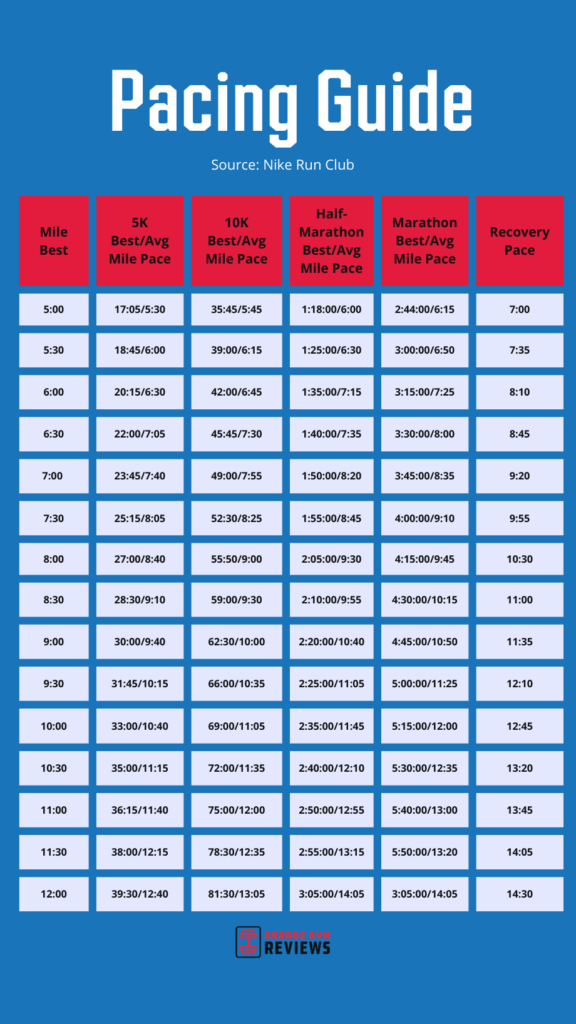
Remember, you can’t just take your best mile time and put it on repeat for 13.1 miles. Instead of doing the equivalent of maxing out your bench press every day, use this chart to help you set your goal pace.
Remember, the higher your lactate threshold is, the longer you will be able to push harder for longer. While you can certainly simulate a race pace in training, this is the time you can push hard for shorter periods. You have to trust that the 13.1 will be there on race day rather than “making sure” by exhausting yourself with mock races.
Turning back the dial and setting your running pace to “recovery” will make you feel better than an easy chair and a bag of Doritos will. This pace can be used for active recovery during training days, or as a cool-down after a hard day. Going from as-hard-as-possible to a dead stop is like jumping in a frozen lake; it is a shock to the body.
| Best Mile | Half-Marathon Best/Avg Mile Pace | Marathon Best/Avg Mile Pace | Recovery Pace |
| 5:00 | 1:18:00/6:00 | 2:44:00/6:15 | 7:00 |
| 5:30 | 1:25:00/6:30 | 3:00:00/6:50 | 7:35 |
| 6:00 | 1:35:00/7:15 | 3:15:00/7:25 | 8:10 |
| 6:30 | 1:40:00/7:35 | 3:30:00/8:00 | 8:45 |
| 7:00 | 1:50:00/8:20 | 3:45:00/8:35 | 9:20 |
| 7:30 | 1:55:00/8:45 | 4:00:00/9:10 | 9:55 |
| 8:00 | 2:05:00/9:30 | 4:15:00/9:45 | 10:30 |
| 8:30 | 2:10:00/9:55 | 4:30:00/10:15 | 11:00 |
| 9:00 | 2:20:00/10:40 | 4:45:00/10:50 | 11:35 |
| 9:30 | 2:25:00/11:05 | 5:00:00/11:25 | 12:10 |
| 10:00 | 2:35:00/11:45 | 5:15:00/12:00 | 12:45 |
| 10:30 | 2:40:00/12:10 | 5:30:00/12:35 | 13:20 |
| 11:00 | 2:50:00/12:55 | 5:40:00/13:00 | 13:45 |
| 11:30 | 2:55:00/13:15 | 5:50:00/13:20 | 14:05 |
| 12:00 | 3:05:00/14:05 | 3:05:00/14:05 | 14:30 |
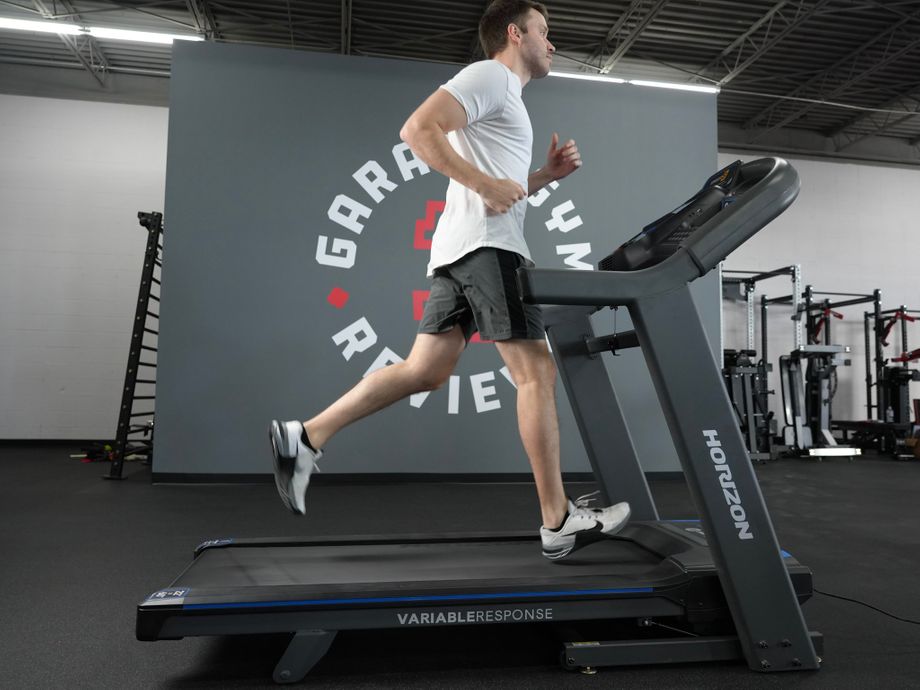
Good Half-Marathon Time: Q&A
What is a good half marathon time by age?
I like to use the 50% rule for strength sports. This means anything around 50% of the world record is really good. For races, it can be translated as the 2x rule, where if you are around double the world record you’re doing a great job.
Women’s records vary from 1:02:52 for a 23-year old at her peak, and it takes until 65 years old to get a record about 1:30:00 (1:32:56 at 65 years old by Switzerland’s Emmi Luthi).
Men’s similar range from 57:31 by the aforementioned Jacob Kiplimo at 20 years old, and hit 1:29:26 by the amazing Ed Whitlock of Canada.
This isn’t to discourage, but to exalt! I use the actual men’s and women’s world records, not the weight class or age group record. If that is too daunting, choose 2x of your age group to pursue. You might start realizing there is more potential in you than you realize.
What is a good half marathon time for a beginner?
Just signing your name on the line, paying your money, and committing to a half marathon training plan is a great first start. Anyone new to marathon running should do their best to enjoy the ride without expectations.
Remember, after your first half-marathon you will have established the best half-marathon time you have ever done! This marker you set for yourself lets you build-up for the next race and try to beat it.
What percentage of the population has run a half marathon?
According to data compiled by The International Institute for Race Medicine, only .01% of Americans have ever run a race6. Ireland tops the list with a muscular .05%.
With the optimal temperature for a marathon being somewhere in the 50s (Farenheit), maybe the Roman name for Ireland is actually an asset for the sport (Hibernia, meaning “land of eternal winter”).
How much rest do I need after a half marathon?
Listen to your body. Taking a recovery run the day after may be better than not moving at all and tightening up. More likely it just means focusing on day-to-day movement. Try to avoid being shunted into a cubicle all day. If you are at a high running level and the race didn’t take a lot out of you, you might not need as much as someone for whom moving through 13.1 miles is a massive endeavor.
References
1. World Athletics, Half Marathon Men.
2. World Athletics, Half Marathon Women.
3. New York Road Runners, Marathon Time Qualifiers.
4. Esfarjani F, Laursen PB. Manipulating high-intensity interval training: effects on VO2max, the lactate threshold and 3000 m running performance in moderately trained males. J Sci Med Sport. 2007 Feb;10(1):27-35. doi: 10.1016/j.jsams.2006.05.014. Epub 2006 Jul 28. PMID: 16876479.
5. Denham J, Feros SA, OʼBrien BJ. Four Weeks of Sprint Interval Training Improves 5-km Run Performance. J Strength Cond Res. 2015 Aug;29(8):2137-41. doi: 10.1519/JSC.0000000000000862. PMID: 25647646.
6. Race Medicine, IAAF State of Running 2019.


